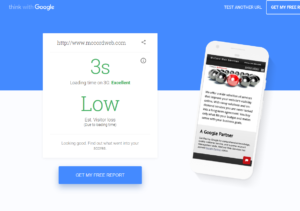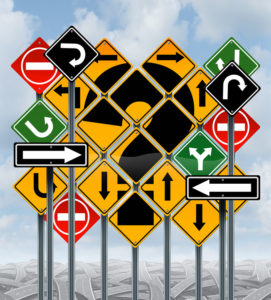
Google says that as your site load speed increases from 1 to 7 seconds, your bounce rate increases 113%. Missed opportunities; bounced prospects means missed sales.
I tested my own website against a number of other sites on the Google Test My Site tool and here’s what I found.
My site www.mccordweb.com – 3 second load, excellent rating, low loss of visitors. My site is a responsive design in PHP and only uses WordPress for the blog.
Industrial company legacy HTML website that is over 8 years old, but the owner is not ready to do an update yet. 7 second load time, fair rating, 26% estimated visitor loss.
Service industry company legacy PHP website that is over 10 years old, but the owner is not ready to do a site update yet. 6 second load time. fair rating, 24% estimated visitor loss.
Doctor’s practice redone responsive WordPress website, but the owner was not speed-focused. 7 second load time. fair rating, 26% estimated visitor loss.
Technology business newly redone responsive WordPress website with a very glitzy look, but the designer was not speed-focused. 10 second load time. poor rating, 29% estimated visitor loss.
What I have found is that the WordPress sites with the slide show on the home page are not testing well for speed. The PHP based websites that do not have a slide show cover and are more text focused and utilize created AMP pages are testing as speedy.
Need help with your website? Check us out to see how we can help you get a speedy rating and not risk visitor loss.


